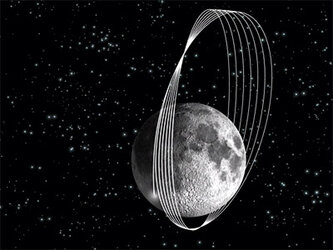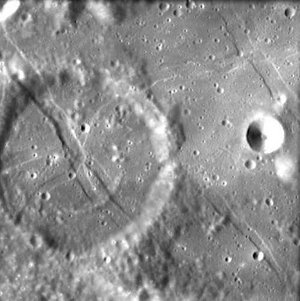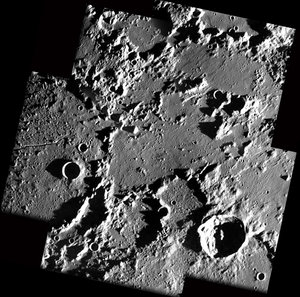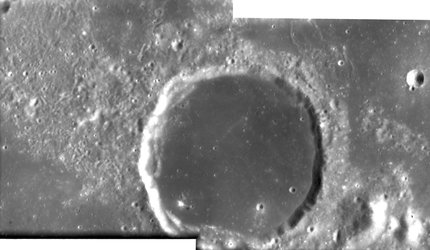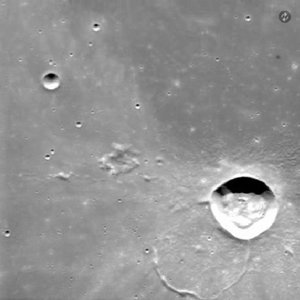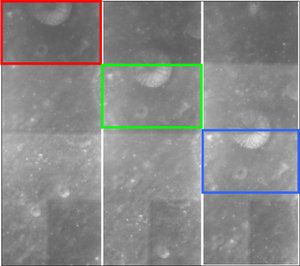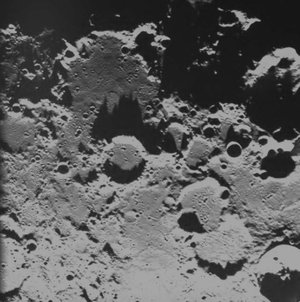Tectonic ‘wrinkles’ in Crater De Gasparis
This image, taken by the Advanced Moon Imaging Experiment (AMIE) on board ESA’s SMART-1 spacecraft, shows Crater De Gasparis on the Moon.
The AMIE camera obtained this image on 14 January 2006 from a distance of about 1090 kilometres with a ground resolution of approximately 100 metres per pixel.
Crater De Gasparis is located close to the Mare Humorum, at longitude 51.2° West and latitude 26.0° South, on the lower left quarter of the Moon’s Earth-facing side. It has a diameter of about 30 kilometres and can be seen with the naked eye from Earth.
The criss-cross patterns in it are called ‘rilles’ (these are features where the surface has sunk down to form a trench).
These rilles coincide with deep tectonic faults that have been active over a long period of lunar geological evolution. They are the result of stresses due to all the tidal forces and volcanic expansion over the lunar mantle during the last stages of lava flooding of Oceanus Procellarum.
The fact that the rilles cross the crater means that they formed after the crater. This is a good example for how geologists can determine the relative history of the Moon’s surface.
This crater is named after the Italian astronomer Annibale de Gasparis (1819-1892). De Gasparis was director of the observatory in Naples, Italy.
For more information:
Jean-Luc Josset, SPACE-X Space Exploration Institute
E-mail: jean-luc.josset @ space-x.ch
Bernard H. Foing, ESA SMART-1 Project Scientist
E-mail: bernard.foing @ esa.int















 Germany
Germany
 Austria
Austria
 Belgium
Belgium
 Denmark
Denmark
 Spain
Spain
 Estonia
Estonia
 Finland
Finland
 France
France
 Greece
Greece
 Hungary
Hungary
 Ireland
Ireland
 Italy
Italy
 Luxembourg
Luxembourg
 Norway
Norway
 The Netherlands
The Netherlands
 Poland
Poland
 Portugal
Portugal
 Czechia
Czechia
 Romania
Romania
 United Kingdom
United Kingdom
 Slovenia
Slovenia
 Sweden
Sweden
 Switzerland
Switzerland


























